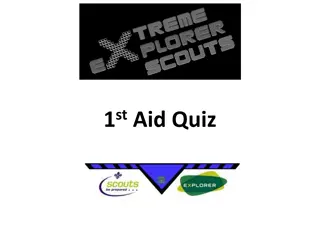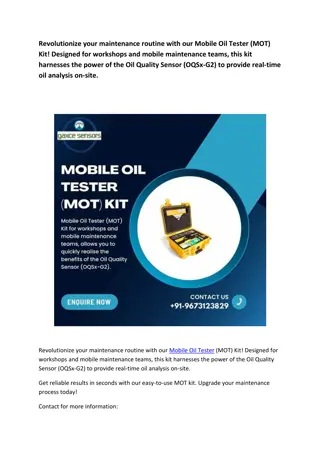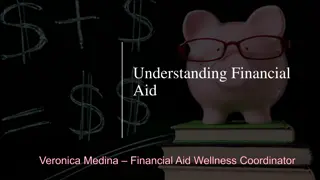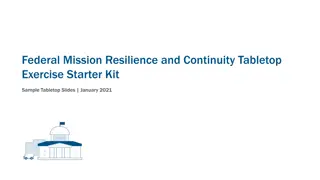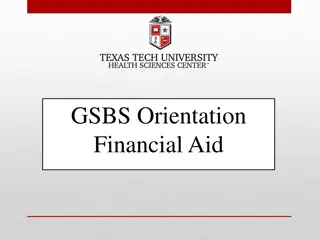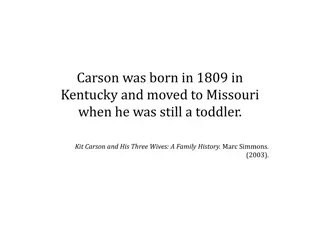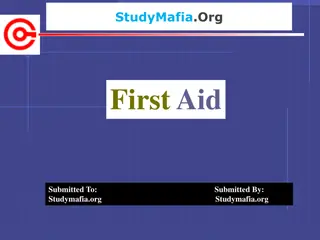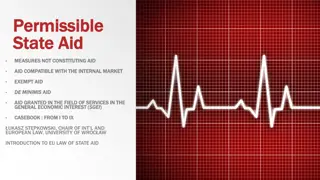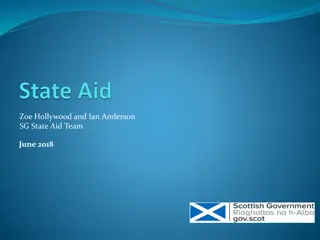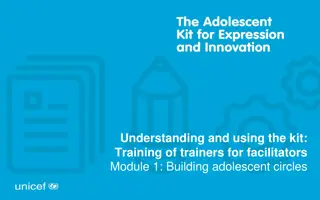Essential First Aid Basics and Kit Recommendations
Understanding the importance of first aid and having a well-stocked first aid kit is crucial for providing immediate assistance during medical emergencies. This article discusses the essentials of first aid, the contents of a sample first aid kit, scene safety protocols, and the importance of seeking help from others in emergency situations.
Download Presentation

Please find below an Image/Link to download the presentation.
The content on the website is provided AS IS for your information and personal use only. It may not be sold, licensed, or shared on other websites without obtaining consent from the author.If you encounter any issues during the download, it is possible that the publisher has removed the file from their server.
You are allowed to download the files provided on this website for personal or commercial use, subject to the condition that they are used lawfully. All files are the property of their respective owners.
The content on the website is provided AS IS for your information and personal use only. It may not be sold, licensed, or shared on other websites without obtaining consent from the author.
E N D
Presentation Transcript
1.0 FIRST AID (a) TRAIN AND TEST July 10, 2024/ag
FIRST AID BASICS KIT FIRST Let's define first aid. Urgent medical care provided to someone who is in need of immediate assistance due to illness or injury, before qualified professional help arrives on the scene. You may be assisting people with injuries that vary in severity. One day you might be helping someone with a paper cut, and tomorrow it could be heart attack or cardiac arrest. The most important thing is to define the situation based on the information available and proceed with medical assistance according to your training and knowledge. One of the keys to performing successful first aid is a properly stocked First Aid Kit. These are readily available online or at major retailers and generally have everything necessary to perform First Aid. Once the First Aid Kit is purchased, the personnel should be informed of the location. The location should be in the common and accessible area so everyone in need can use the supplies. Also, a procedure for regularly checking and replenishing the Kit is essential to insure that necessary supplies are available when needed.
Sample First Aid Kit 22 SUGGESTED ESSENTIALS WHAT SHOULD BE IN THE KIT? 16) 3/4"x3" Adhesive plastic bandages (1) 2"x4.1 yd. Conforming gauze roll bandage (1) 2"x4" Elbow & knee plastic bandage (1) 3"x4.1 yd. Conforming gauze roll bandage (1) 1-3/4"x2" Small fingertip fabric bandage (1) Triangular sling/bandage (1) 6"x9" Instant cold compress (4) 2"x2" Gauze dressing pads 2-pks (4) 3"x3" Gauze dressing pads, (2) 2-pks (2) Exam quality gloves, 1 pair (2) 4"x4" Gauze dressing pads, (1) 2-pack (1) Sterile eye pad (1) 5"x9" Trauma pad (3) Triple antibiotic ointment packs 1) Burn relief pack, 3.5 gm (6) Alcohol cleansing pads (1) 1"x5 yd. First aid tape roll (6) Antiseptic cleansing wipes (sting free) (6) Aspirin tablets, (3) 2-pks (1) 4-1/2" Scissors, nickel plated (1) 4" Tweezers, plastic (1) First aid guide
FIRST AID (Continued) FIRST AID (Continued) Scene Safety One of the critical skills for performing effective First Aid is to ensure that the scene is safe for the victim as well as everyone else present. All precautions have to be taken prior to administering the actual First Aid. If it's a traffic accident, insure that the cars driving by are aware of the accident, signal for help from drivers, and ask them to monitor/direct traffic while you proceed with first aid. Engage help!!!! Help from Others The chances of performing successful and effective first aid increase if there is more than one person assisting in Emergency. First Aid trained professional should make every effort to locate additional help in the vicinity of the incident. These people could be deployed to call 911 or help secure the scene. Before beginning First Aid one of the important things about administering effective First Aid is to determine when it is needed. Below are some general guidelines for: 1. If the victim is responsive introduce yourself and offer help 2. If the victim agrees proceed with First Aid administration 3. If the victim refuses, call 911 and wait for the arrival with the victim 4. If person is unresponsive, assume that your help is needed and proceed with First Aid/CPR
SAFETY IN FIRST AID Occupational Safety and Health Organization (OSHA) Guidelines This section briefly outlines the recommendations issued by OSHA. The coursework has been designed in adherence with these guidelines. Please review the lists below and familiarize yourself with information. Gear, which might be needed or is required by your employer to effectively protect yourself from threats related to First Aid administration: Gloves - to protect from blood or other bodily fluids Eye protection - to protect from blood or other bodily fluids Mask protection - when giving mouth to mouth protects from germs and bacteria
SAFETY IN FIRST AID In case you came in contact with bodily fluids, blood or skin follow the following instructions as soon as you can: Take the gloves off, if wearing any Wash the area with soap (work up soap lather for 15 seconds) and water, if contact with eyes, nose, or ear rinse with water Wash your hands thoroughly with soap, if not available use waterless hand sanitizer, and wash your hands with water later Dry your hands with paper towel and use paper towel to close the faucet Inform your supervisor/person responsible for emergency response and consult your medical provider as soon as possible
TAKE THE QUIZ AND THANK YOU! Double click or right click and select Open Hyperlink Sign in by entering your first and last name Enter password CHRISTELTRAIN1 IN ALL CAPS. Take the QUIZ You will need 70% to pass Results will be reported against and published as they occur testmoz.com/1261505
End of quiz WE INVITE YOU TO MOVE TO THE NEXT MODULE AS TIME ALLOWS. SAFETY IS AS IMPORTANT TO US AS YOU AND YOUR FAMILIES ARE. LET S DO THIS TOGETHER!



